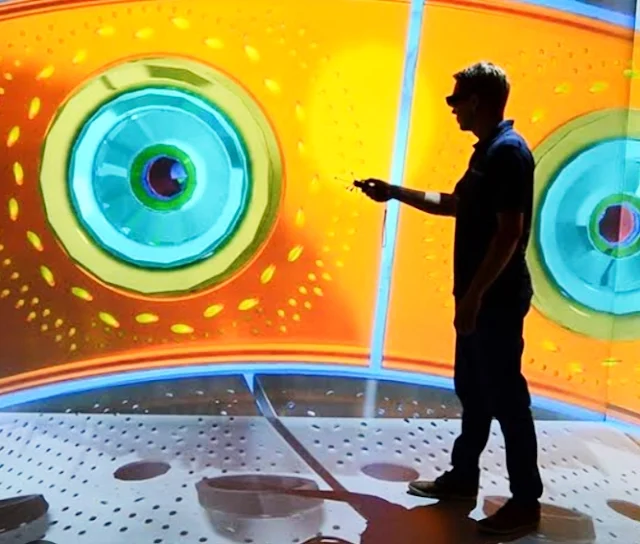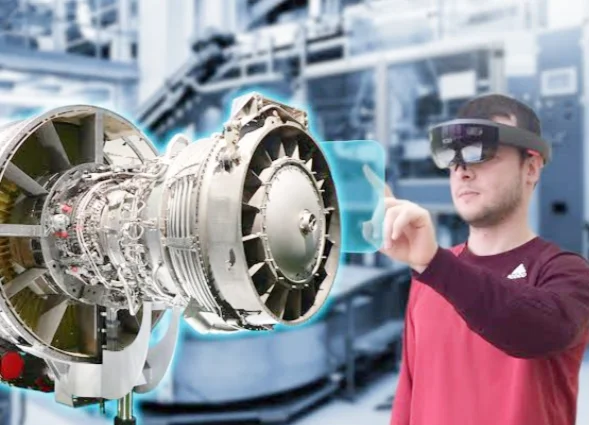AR Technology for Jet Engine Maintenance: A Breakdown
GE Aviation is at the forefront of innovation, utilizing Augmented Reality (AR) to transform jet engine maintenance. Here's a breakdown of the key AR technologies involved:
Hardware:
- AR Glasses or Tablets: These wearable devices act as the primary interface for mechanics. They are equipped with:
- Display: Projects digital information onto the real world.
- Camera(s): Captures the physical environment, including the engine component being worked on.
- Sensors (optional): Depending on the system, additional sensors like accelerometers or gyroscopes might be used for enhanced spatial awareness.
Software:
- Augmentation Engine: This software is the brain of the system, responsible for:
- Object Recognition: Analyzes the camera feed to identify the specific engine component in view.
- Content Management: Retrieves relevant digital instructions and data (diagrams, specifications, etc.) associated with the recognized component.
- Overlay Rendering: Seamlessly superimposes the retrieved information onto the camera feed, creating the augmented view for the mechanic.
Additional Technologies (Potential):
- Real-time Communication Integration: Future iterations might integrate with communication software, allowing for remote collaboration. Mechanics could share their AR view with off-site experts for real-time troubleshooting and guidance.
- Sensor Data Integration: Advanced systems could potentially connect with engine sensor data, providing real-time engine health information overlaid onto the mechanic's view. This could facilitate predictive maintenance by identifying potential issues before they become critical failures.
AR Technology for Jet Engine Maintenance: Table
| Component | Function |
|---|---|
| Hardware | |
| * AR Glasses or Tablet | Primary interface for mechanics; displays digital information and captures the surrounding environment through cameras. Optional sensors can enhance spatial awareness. |
| Software | |
| * Augmentation Engine | Identifies the engine component in view, retrieves relevant digital instructions and data, and seamlessly overlays it onto the mechanic's camera view. |
| Additional Technologies (Potential) | |
| * Real-time Communication Integration | Enables remote collaboration with off-site experts through real-time sharing of the AR view for troubleshooting and guidance. |
| * Sensor Data Integration | Connects with engine sensor data to provide real-time engine health information, potentially facilitating predictive maintenance. |
This combination of hardware, software, and potentially additional technologies empowers AR to revolutionize jet engine maintenance by offering mechanics a more intuitive and efficient way to work.
GE Aviation and the Future of Jet Engine Maintenance: Augmented Reality Takes Flight
Traditionally, jet engine maintenance has relied on bulky paper manuals and extensive mechanic experience. However, GE Aviation is at the forefront of innovation, exploring Augmented Reality (AR) technology to revolutionize the way engines are serviced.
How AR Manuals Can Enhance Maintenance
AR manuals overlay digital instructions directly onto the physical engine component being worked on. This offers several advantages over traditional methods:
- Improved Visualization: Mechanics can see step-by-step instructions superimposed on the engine itself, eliminating the need to flip through pages or decipher complex diagrams.
- Increased Efficiency: AR can streamline the maintenance process, reducing time spent searching for information and minimizing errors.
- Enhanced Training: AR manuals can serve as interactive training tools, allowing new mechanics to learn procedures in a safe and realistic environment.
GE Aviation's AR Initiatives
While GE Aviation doesn't currently offer publically available AR manuals, they have partnered with companies like Upskill to develop and test AR solutions for jet engine assembly and maintenance. These pilot programs have demonstrated promising results, including:
- Reduced Errors: AR guidance can minimize human error during critical tasks, leading to improved engine performance and safety.
- Increased Efficiency: Studies show AR can boost mechanic productivity by 8-12%, saving airlines valuable time and resources.
- Improved Collaboration: AR allows remote experts to see what mechanics see through a live video feed, enabling real-time troubleshooting and support.
The Future of AR in Aviation Maintenance
The use of AR manuals in jet engine maintenance is still in its early stages. However, the potential benefits are undeniable. As AR technology continues to mature and costs decrease, we can expect to see wider adoption by GE Aviation and other major engine manufacturers.
Here's a table summarizing the key points:
| Feature | Benefit |
|---|---|
| AR Visualization | Overlays instructions directly on the engine component |
| Increased Efficiency | Reduces time spent searching for information and minimizes errors |
| Enhanced Training | Provides interactive training for new mechanics |
| Reduced Errors | Minimizes human error during critical tasks |
| Increased Efficiency | Boosts mechanic productivity |
| Improved Collaboration | Enables real-time troubleshooting and support with remote experts |

.jpg)

